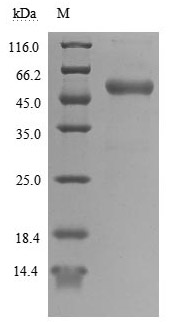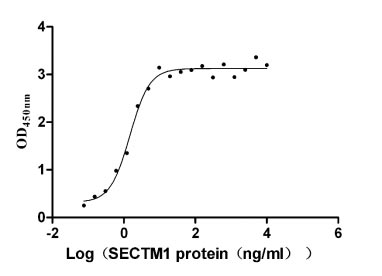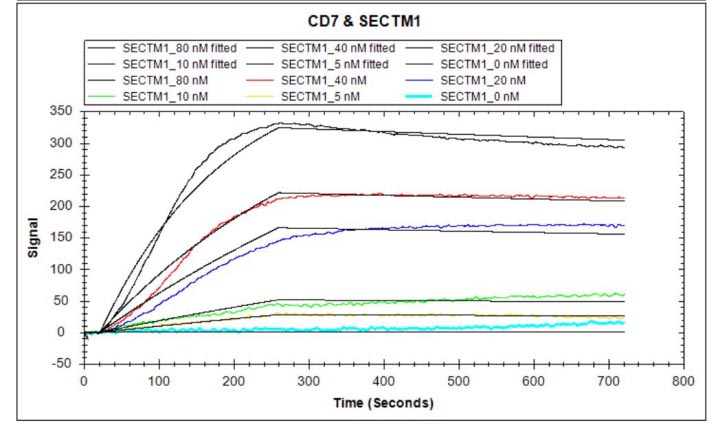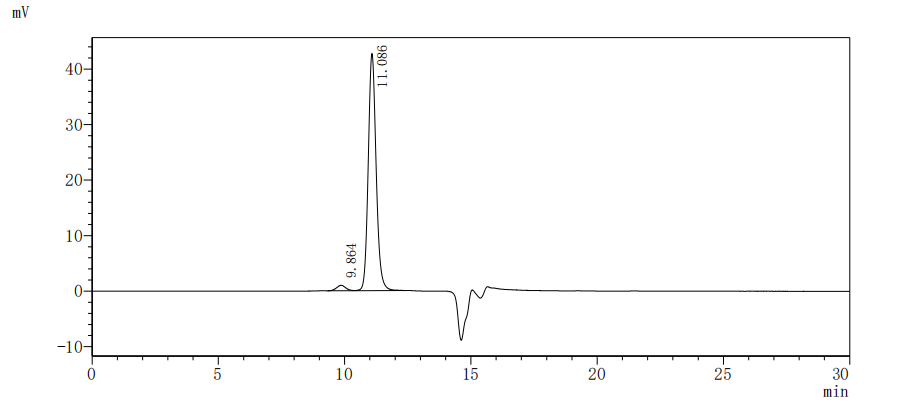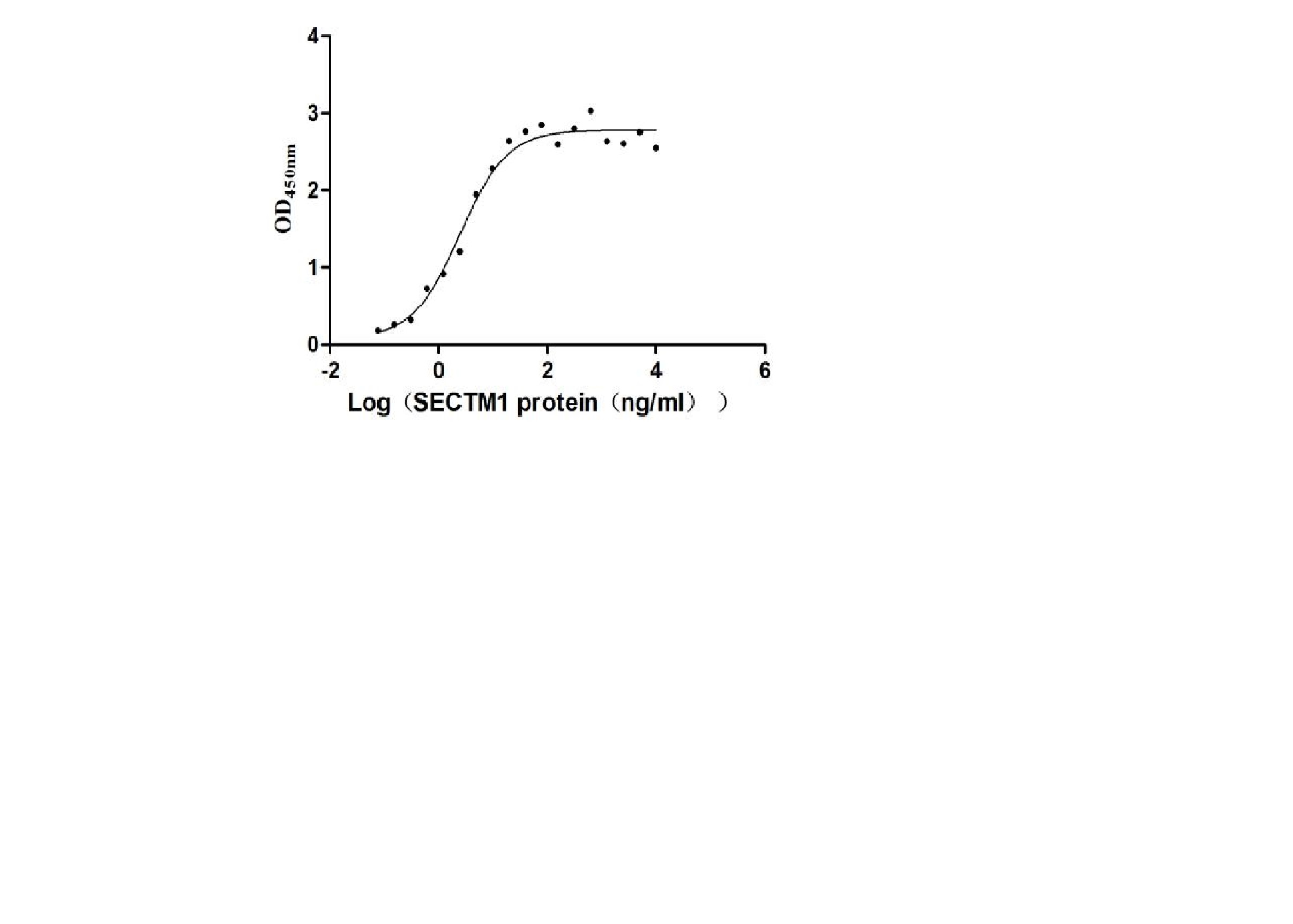The recombinant human CD7 protein is expressed in mammalian cells using a plasmid carrying the target gene. The target gene encodes the 26-180aa of the human CD7 protein. The target gene is also labeled with a C-terminal hFc-Myc-tag gene. The resulting recombinant CD7 protein's purity is over 90% as measured by SDS-PAGE. The SEC-HPLC determines its purity exceeding 95%. Its endotoxin level is less than 1.0 EU/μg as accessed by the LAL method. Its biological activity is verified via ELISA, where this human CD7 protein specifically binds to the SECTM1 (CSB-MP819898HU) with an EC50 ranging from 1.236 to 1.773 ng/mL. In the LSPR assay, this CD7 protein captured on the COOH chip binds to the human SECTM1 protein (CSB-MP819898HU) with an affinity constant of 1.84 nM.
Human CD7 is a cell surface glycoprotein primarily expressed on T cells, NK cells, and some hematopoietic progenitor cells. It plays a significant role in the immune system, particularly in T lymphocytes. It is involved in various cellular processes, including T-cell activation, differentiation, and apoptosis. The expression of CD7 is notably high in T-cell acute lymphoblastic leukemia (T-ALL), making it an attractive target for therapeutic interventions. Research has shown that CD7 is expressed on the majority of T-ALL cells, as well as on leukemia-initiating cells, which underscores its potential as a target for antibody-drug conjugates and other immunotherapeutic strategies [1].
CD7 is also involved in signaling pathways that influence T-cell behavior. CD7 activation has been shown to deliver pro-apoptotic signals during galectin-1-induced T cell death, indicating its involvement in regulating T cell survival and apoptosis [2]. Additionally, CD7 interacts with SECTM1, a ligand that can activate the PI3K signaling pathway in monocytes, further illustrating its role in immune cell signaling [3]. This interaction is particularly relevant in the context of systemic sclerosis, where CD7 activation is associated with enhanced cytotoxic responses [4].
References:
[1] J. Zhang, A. Jain, S. Milhas, D. Williamson, J. Mysliwy, A. Lodge, et al. An antibody-drug conjugate with intracellular drug release properties showing specific cytotoxicity against cd7-positive cells, Leukemia Research, vol. 108, p. 106626, 2021. https://doi.org/10.1016/j.leukres.2021.106626
[2] K. Pace, H. Hahn, M. Pang, J. Nguyen, & L. Baum. Cutting edge: cd7 delivers a pro-apoptotic signal during galectin-1-induced t cell death, The Journal of Immunology, vol. 165, no. 5, p. 2331-2334, 2000. https://doi.org/10.4049/jimmunol.165.5.2331
[3] T. Wang, Y. Ge, M. Xiao, A. López-Coral, L. Li, A. Roesch, et al. Sectm1 produced by tumor cells attracts human monocytes via cd7-mediated activation of the pi3k pathway, Journal of Investigative Dermatology, vol. 134, no. 4, p. 1108-1118, 2014. https://doi.org/10.1038/jid.2013.437
[4] T. Papadimitriou. Cd7 activation regulates cytotoxicity-driven pathology in systemic sclerosis, yielding a target for selective cell depletion, Annals of the Rheumatic Diseases, vol. 83, no. 4, p. 488-498, 2023. https://doi.org/10.1136/ard-2023-224827


